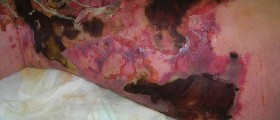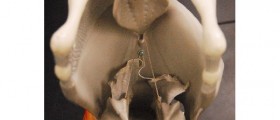How to Recognize Signs of Impetigo Rash?
Impetigo is a highly contagious infection of the skin, which is bacterial in nature, and it is also known as school sores. It is very common among children, particularly those under 5, although it can occur in adults as well.
Bacteria staphylococcus and streptococcus are responsible for this infection, which can be passed to another person through direct skin-to-skin contact, through nasal mucus, but it is important to know that cuts in the skin may also be an entry for these bacteria. The symptoms that indicate impetigo rash are most usually blisters and skin rash that occur due to the multiplication of bacteria.
Crusty sores first form on areas such as the face, arms, legs, and feet. In the beginning, only one might be present, but later on, their number will increase. They turn into blisters that are filled with pus, and once they burst, a yellow or brown crust will appear.

Types of Impetigo Rash
So far, three kinds of impetigo have been identified, and they are bullous impetigo, non-bullous impetigo, and ecthyma.
Bullous impetigo is a bit more severe form of this rash and staphylococcus bacteria causes it. This skin infection is particularly common among children younger than two, and it usually lasts from four to even six weeks.Non-bullous impetigo can be caused by staphylococcus or streptococcus bacteria, and it is also common in children. It is manifested through the rash on the face and particularly around the nose, as well as through small blisters that turn into yellow crusts.
- There are three types of impetigo: non-bullous, bullous, and ecthyma. The most common form is non-bullous impetigo (NBI), also called impetigo contagiosa, accounting for almost 70% of cases. The etiology of impetigo varies based on climate and is evolving over time. In temperate climate, it is mainly caused by Staphylococcus aureus, while just 5–10% of episodes are caused by Streptococcus pyogenes or by a combination of both pathogens.
- Moreover, the pathogenic organism of the bullous form that causes the cleavage within the granular layer of the epidermis is almost always S.aureus. Methicillin-resistant S. aureus is detected in some cases of impetigo, ranging from a rate of 1–10%.
- This retrospective cohort study included children up to 14 years of age enrolled in the Pedianet database from January 2004 to June 2018. Events were identified searching ICD9-CM codes (684 and 694.3) and free text fields for a diagnosis of NBI reported during a primary care visit.
- Diagnoses were manually validated, and events registered within 30-days after the index date were considered follow-ups. Incidence (IR) and prevalence (PR) rates of NBI were stratified by sex, age group, and calendar year. Topical and systemic antibiotic treatments were grouped based on ATC codes.
- 15,136 NBI episodes occurred in a total cohort of 225,979 children.
- The overall IR of NBI was 9.5 per 1,000 person-years, and children aged 1–4 years had the highest IR (13.2 per 1,000 person-years). A significant decrease in NBI IR from 13 per 1,000 person-years in 2004 to 7.46 per 1,000 person-years in 2018 (p
Ecthyma is definitely the most severe type of impetigo skin rash, and it causes deep sores, which further form ulcers that leave scars once the infection is gone. It affects the legs and feet. In cases of ecthyma, oral and topical antibiotics have to be used simultaneously.
How to Deal with Impetigo Rash?
Because this infection is bacterial, most frequently it is treated with antibiotics. They may be taken orally and applied to the skin since there are topical ointments that can be used if a smaller area of the body is affected.
If a child is infected, it is highly recommended to keep it isolated from other children for a week approximately, to prevent passing impetigo to other children, as well as to prevent other bacteria from entering the open sores and causing more complications.

















Your thoughts on this
Loading...